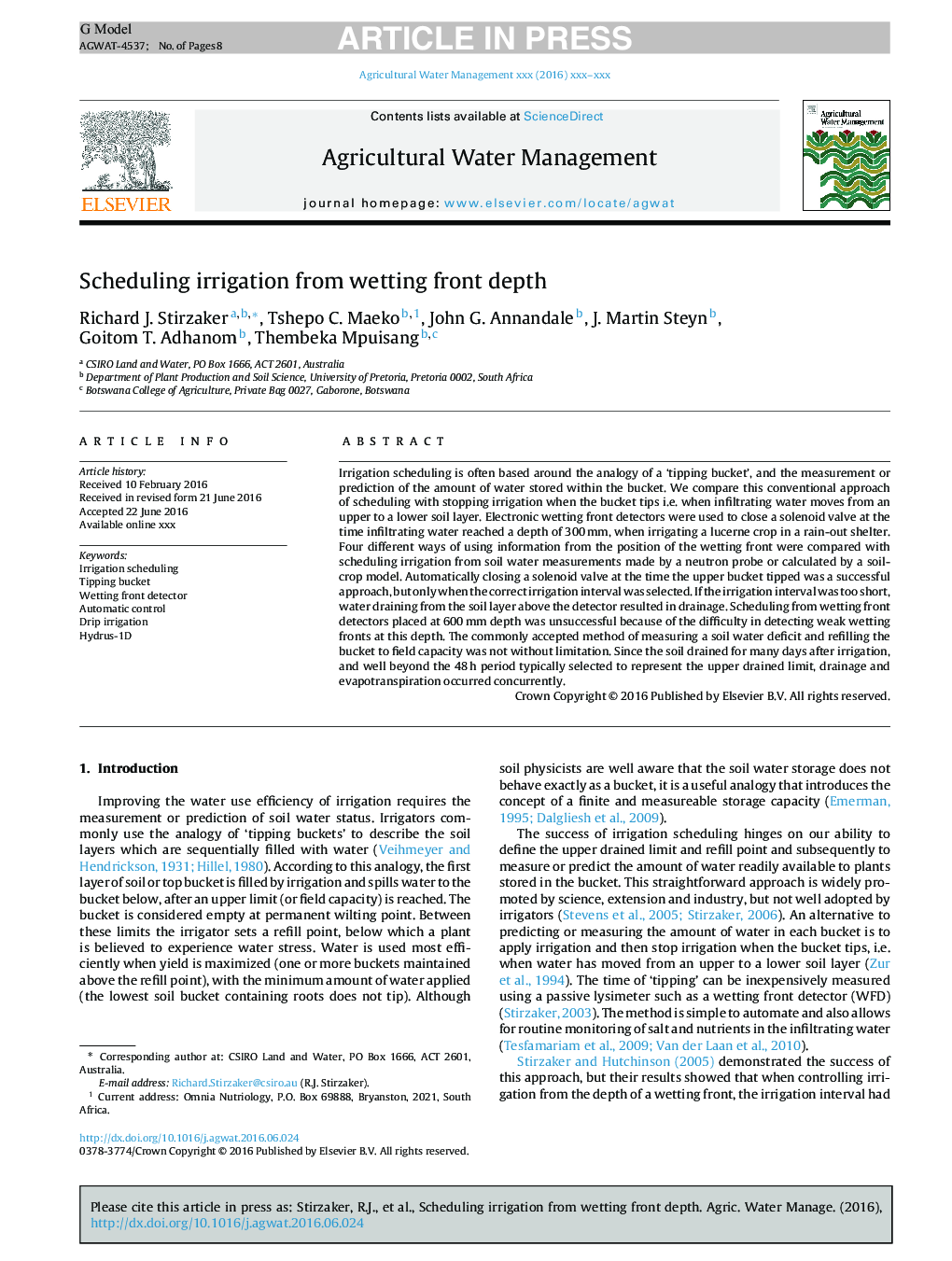| کد مقاله | کد نشریه | سال انتشار | مقاله انگلیسی | نسخه تمام متن |
|---|---|---|---|---|
| 5758616 | 1622901 | 2017 | 8 صفحه PDF | دانلود رایگان |
عنوان انگلیسی مقاله ISI
Scheduling irrigation from wetting front depth
ترجمه فارسی عنوان
برنامه ریزی آبیاری از خیس شدن عمق جلو
دانلود مقاله + سفارش ترجمه
دانلود مقاله ISI انگلیسی
رایگان برای ایرانیان
کلمات کلیدی
موضوعات مرتبط
علوم زیستی و بیوفناوری
علوم کشاورزی و بیولوژیک
علوم زراعت و اصلاح نباتات
چکیده انگلیسی
Irrigation scheduling is often based around the analogy of a 'tipping bucket', and the measurement or prediction of the amount of water stored within the bucket. We compare this conventional approach of scheduling with stopping irrigation when the bucket tips i.e. when infiltrating water moves from an upper to a lower soil layer. Electronic wetting front detectors were used to close a solenoid valve at the time infiltrating water reached a depth of 300Â mm, when irrigating a lucerne crop in a rain-out shelter. Four different ways of using information from the position of the wetting front were compared with scheduling irrigation from soil water measurements made by a neutron probe or calculated by a soil-crop model. Automatically closing a solenoid valve at the time the upper bucket tipped was a successful approach, but only when the correct irrigation interval was selected. If the irrigation interval was too short, water draining from the soil layer above the detector resulted in drainage. Scheduling from wetting front detectors placed at 600Â mm depth was unsuccessful because of the difficulty in detecting weak wetting fronts at this depth. The commonly accepted method of measuring a soil water deficit and refilling the bucket to field capacity was not without limitation. Since the soil drained for many days after irrigation, and well beyond the 48Â h period typically selected to represent the upper drained limit, drainage and evapotranspiration occurred concurrently.
ناشر
Database: Elsevier - ScienceDirect (ساینس دایرکت)
Journal: Agricultural Water Management - Volume 179, 1 January 2017, Pages 306-313
Journal: Agricultural Water Management - Volume 179, 1 January 2017, Pages 306-313
نویسندگان
Richard J. Stirzaker, Tshepo C. Maeko, John G. Annandale, J. Martin Steyn, Goitom T. Adhanom, Thembeka Mpuisang,
